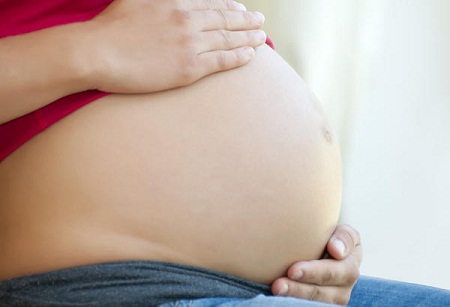At 36 weeks gestation, you are feeling “ready” to meet your little guy or gal. The time will be here soon and you will be a new mommy. This is one of the positives when you are at 36 weeks gestation. Then what about the negatives? Pelvic pressure is for sure of the many negatives, right? Then let’s see how to deal with it - the pelvic pressure at 36 weeks, so you can continue to prepare for you baby’s birth.

Positives at 36 Weeks Gestation
At this point in your pregnancy, there are a lot of positives. The baby is now about 18-19 inches long and can weigh as much as 6 pounds. The fuzzy lanugo and creamy vernix that has protected your baby from the amniotic fluid is disappearing as birth approaches.
At this stage in pregnancy, most babies are in the head down position. This process is called lightening and often occurs a few weeks before labor begins in first pregnancies. If this isn’t your first child, this process may not begin until right before labor begins.
Negatives at 36 Weeks Gestation
As the positives outweigh the negatives, you still may have discomfort that is painful or bothersome as a result of lightening. You may feel increased pelvic pressure at 36 weeks. This may make walking uncomfortable and you’ll probably be bothered by increased trips to the restroom as the baby presses against your bladder. If your baby is very low, you may experience that when you are 36 weeks pregnant, pressure in the bum. Some women describe this as if they were carrying a bowling ball between their legs! This pressure at 36 weeks is normal as your baby has descended down in preparation for birth.
In the third trimester, a hormone called relaxin is released in high levels. Its purpose is to soften and relax the joints in your pelvic area. This is to allow the baby to pass through your birth canal easily. This hormonal change combined with the extra weight you are carrying can leave you with much pelvic pressure at 36 weeks.
How to Alleviate Pelvic Pressure at 36 Weeks
Although these aches, pain and pressure may be natural, there is no reason you should have to suffer through them as you prepare for such an exciting moment. Listed below are some measures you can take to alleviate some of the bothersome pressure at 36 weeks:
Attempt to rest while elevating your hips.
Apply heat to the painful areas to relax muscles and reduce inflammation.
Consider taking a warm bath.
Treat yourself to a relaxing massage.
Walking may be difficult, however, daily walks can aid in relieving your aches, pains and pressure.
Acupuncture can relieve pain and reduce swelling.
A chiropractor can adjust misaligned joints in your body. Be sure he/she is trained in working with pregnant women. Also, a trained chiropractor can use a method called the Webster Technique which helps to align the pelvis for the baby’s transition down the birth canal.
Gentle, safe exercise helps to decrease muscle spasms and improve spinal function in turn reducing hip and pelvic pain. Try gentle stretching, walking, biking, swimming or water aerobics to gain relief.
Finally, rest and relaxation. Relaxing your body and getting off of your feet can alleviate sciatic and lower back pain/pressure.
At this stage in your pregnancy, it is natural to feel pressure in the bum and pelvic area. These methods can offer natural methods for relief. However, at any point if you feel uncomfortable or believe the pressure may be caused by more than the natural descent of your baby, notify your obstetrician immediately.
- 1.
- 2.
- 3.

View All Comments /Add Comment